What's New
Displaying results 1831 - 1840 of 4924
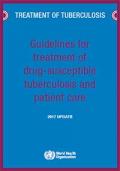
Resource | Guidelines,
The update of the Guidelines for treatment of drug-susceptible tuberculosis and patient care is important in the context of the End TB Strategy, which recommends treatment and patient support for all people with TB. This update by WHO aims to use the best available evidence on the treatment of drug-susceptible TB and interventions to ensure adequate patient care and support in order to inform policy decisions made in these technical areas by national TB control programme managers, national policy-makers and medical practitioners in a variety of geographical, economic and social settings.
The objectives of the updated Guidelines for treatment of drug-susceptible tuberculosis and patient care are:
1) to provide updated recommendations based on newly emerged evidence on the treatment of drug-susceptible TB and patient care; and
2) to provide a summary of changes in the new guidelines together with all the existing and valid WHO recommendations on the treatment of drug-susceptible TB and TB patient care.

Resource | Publications,
AIDS data contains the very latest data, from the end of 2015 and in mid-2016, on the world’s response to HIV: the latest information on the number of people living with HIV, the number of new HIV infections, the numbers of people—both adults and children—on HIV treatment, the coverage of prevention of mother-to child transmission of HIV services and expenditure on the AIDS response, both domestic and international. Trends show both the remarkable progress made in HIV treatment and the challenges that exist for HIV prevention. By region and by country, by sex and by age, data are presented through both graphs and charts and in extensive tables.
This publication brings together in one place a part of the huge volume of data collected by UNAIDS over the years. The full data set of information for 1990 to 2015 can be found on an interactive website: aidsinfo.unaids.org.

Resource | Publications,
#WhatWomenWant was launched as a campaign, powered by young women who want to be meaningfully involved in making change for women and girls. Using social media, it offers an innovative vehicle to amplify new voices, meet young women where they are, allow them to connect with others, lead with lived expertise, bring their solutions to the table, and build across and between issues, sectors, and movements.
The campaign engages through an expanding network of primarily women-led organizations and individuals who are working to advance gender equality through a women’s rights and health focus.
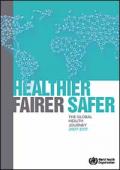
Resource | Publications,
This report describes and analyses key aspects of global health over the last decade. It considers trends and policies that are relevant to the role and potential influence of the World Health Organization (WHO). It deals with themes and areas of the world’s health, where progress would have been expected, was explicitly pledged, or was urgently needed.
This report is not intended to be a work of scholarship, nor to address every aspect of global health. It is intended to look back and reflect on the trends, achievements and challenges of global health over the last decade – and to explore the needs of the future.
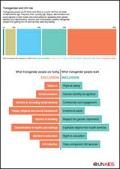
Resource | Fact Sheets,
Transgender people are 49 times more likely to acquire HIV than all adults of reproductive age. They face, from a young age, stigma, discrimination and social rejection in their homes and communities for expressing their gender identity. Such discrimination, violence and criminalization prevent transgender people from getting the HIV services they need stay healthy.
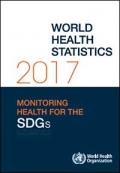
Resource | Publications,
The World Health Statistics series is WHO’s annual compilation of health statistics for its 194 Member States. The series is produced by the WHO Department of Information, Evidence and Research, of the Health Systems and Innovation Cluster, in collaboration with all relevant WHO technical departments.
World Health Statistics 2017 focuses on the health and health-related Sustainable Development Goals (SDGs) and associated targets by bringing together data on a wide range of relevant SDG indicators. In some cases, as indicator definitions are being refined and baseline data are being collected, proxy indicators are presented. In addition, in the current absence of official goal-level indicators, summary measures of health such as (healthy) life expectancy are used to provide a general assessment of the situation.
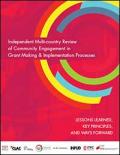
Resource | Publications,
This independent review, commissioned by the Community, Rights and Gender (CRG) Department at the Global Fund Secretariat, shares findings, conclusions, and recommendations for enhancing the meaningful engagement of communities in all phases of Global Fund grants, with an emphasis on grant making and grant implementation. The review synthesizes lessons learned and good practices for how communities engage meaningfully, and identifies key principles and strategic actions the Global Fund can take to ensure greater accountability between communities, Country Coordinating Mechanisms, other key stakeholders, and the Global Fund itself.
It is important to note that HIV, tuberculosis (TB), and malaria disproportionately affect certain groups as a result of social and economic inequities that persist worldwide. These groups are often criminalized and experience human rights abuses, seriously compromising their access to health services. These groups are also uniquely positioned to take action in response to disproportionate disease burden and their social and structural drivers.
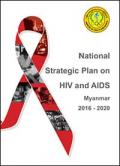
Resource | Guidelines,
The Republic of the Union of Myanmar’s National Strategic Plan on HIV/AIDS 2016–2020 is the strategic guide for the country’s response to HIV at national, state/regional and local levels. The framework describes the current dynamics of the HIV epidemic and articulates a strategy to optimize investments through a fast track approach with the vision of ending HIV as a public health threat by 2030. Myanmar’s third National Strategic Plan (HIV NSP III) issues a call to all partners to front-load investments to close the testing gap and reach the 90–90–90 prevention and treatment targets to protect health for all.
This strategy builds upon Myanmar’s political commitment and the achievements of the previous HIV NSP II, and is aligned with the Three Ones principles and guides the country to focus on geographical, population and intervention priorities to ensure the greatest impact.
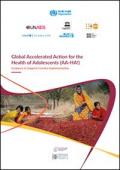
Resource | Guidelines,
Adolescents are not simply old children or young adults. This deceptively simple observation lies at the heart of Global Accelerated Action for the Health of Adolescents (AA-HA!): Guidance to support country implementation, which reflects the coming of age of adolescent health within global public health.
For years, the unique health issues associated with adolescence have been little understood or, in some cases, ignored. But that has now changed. Adolescent health and development was made an integral part of the Global Strategy for Women’s, Children’s and Adolescents’ Health (2016–2030) (The Global Strategy) because, in the words of the United Nations Secretary-General, “[adolescents are] central to everything we want to achieve, and to the overall success of the 2030 Agenda”.
This Guidance is a milestone for translating the Global Strategy into action. It provides a wealth of information to policy-makers, practitioners, researchers, educators, donors, and civil society organizations – including the most up to-date data on the major disease and injury burdens that affect adolescents. It supports the implementation of the Global Strategy by providing the comprehensive information that countries need to decide what to do for adolescent health, and how to do it. It builds on on-going efforts to ensure that adolescents can Survive, Thrive and are in a position to Transform the societies in which they live.
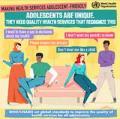
Resource | Infographics,
Adolescents (aged 10 – 19 years) are unique. Not only is adolescence a period of life when people are particularly vulnerable to certain health issues, it is also a time when critical behaviours are shaped that will affect health in the future. They need quality health services that recognize this.





